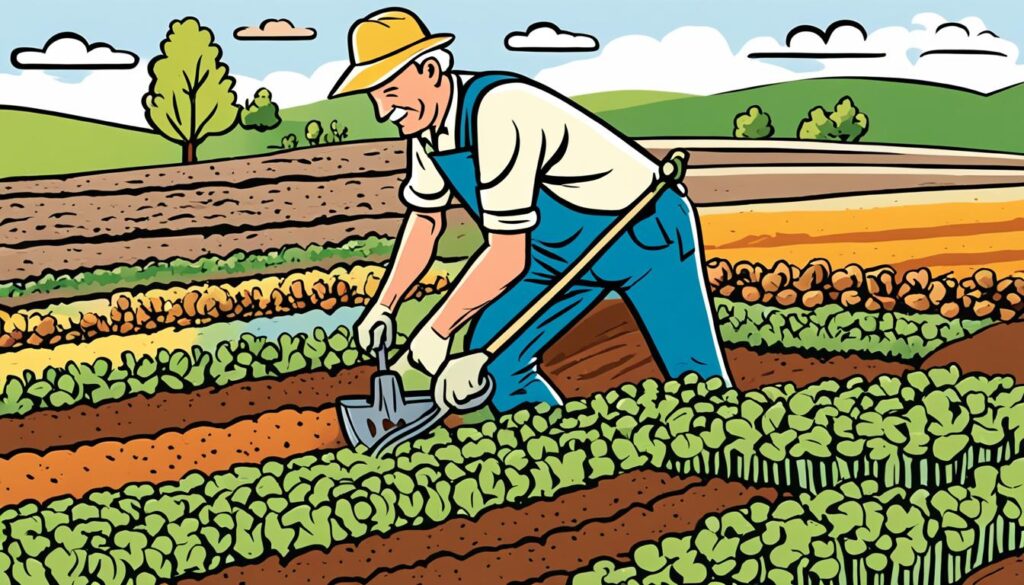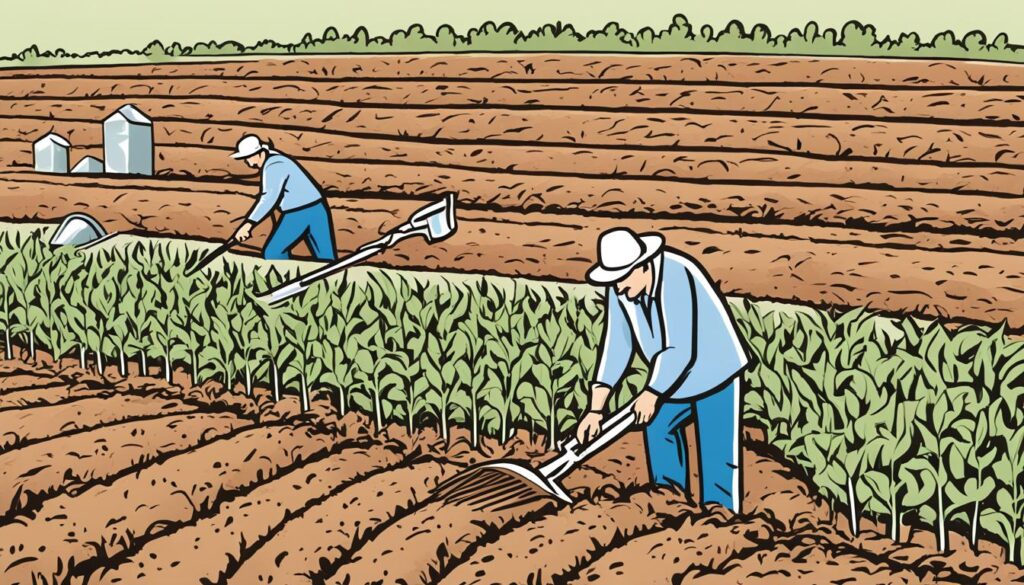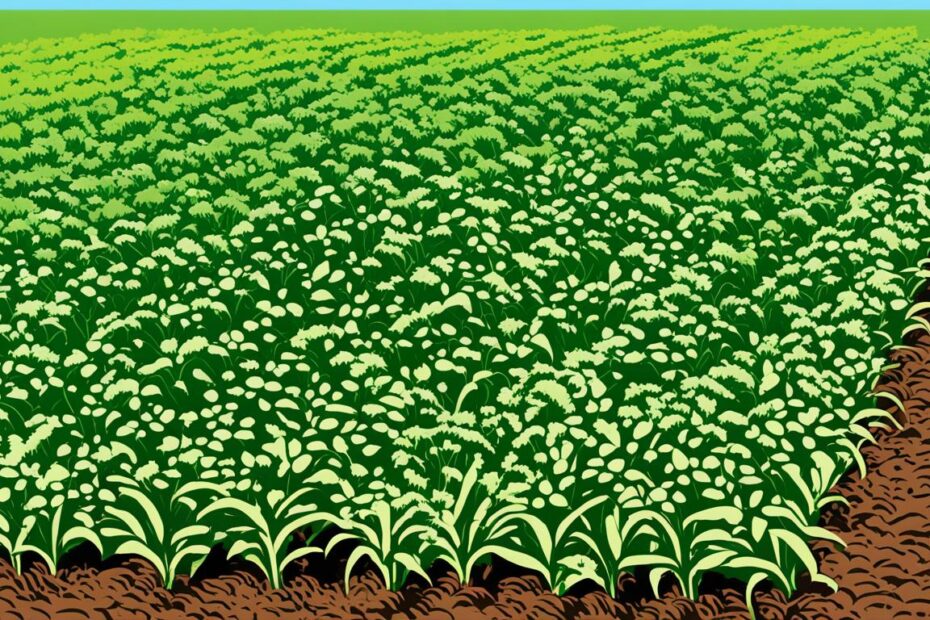Are you struggling to cultivate a thriving garden in clay soil? Do your plants seem to struggle with nutrient deficiencies and waterlogging? What if there was a simple solution to unlock the full potential of your garden and promote optimal growth in even the most challenging soil conditions?
Enter cover crops for clay soil. These unsung heroes of sustainable soil management can revolutionize your gardening game and transform your clay soil into fertile ground. By incorporating the right cover crops into your garden, you can enhance fertility, improve soil structure, and reap a host of other benefits.
But which cover crops are best suited for clay soil? How and when should you plant them? And what is the process for managing and processing these crops to maximize their impact on your soil health?
In this article, we will answer these questions and more as we delve into the world of cover crops for clay soil. Get ready to unlock the growth potential of your garden and say goodbye to the challenges of clay soil once and for all!
Key Takeaways:
- Cover crops are essential for sustainable soil management in clay soil.
- Tap-rooted crops, nitrogen-fixing legumes, and bio-mass builders are ideal cover crop options for clay soil.
- Plant cover crops before winter to provide protection and add nutrients to the soil.
- Seeding cover crops is a simple process that involves broadcasting the seeds on top of compost or rich soil.
- Processing cover crops at the right time prevents them from becoming weeds and maximizes their impact on soil health.
When to Plant Cover Crops
The timing for planting cover crops depends on your specific needs. There are several optimal periods to consider when deciding when to plant cover crops.
1. Fall Planting
One ideal time to plant cover crops is in the fall. By planting them before winter arrives, you can allow the cover crops to establish and provide protection to the soil during the colder months. Additionally, fall-planted cover crops contribute essential nutrients to the soil, enhancing its fertility. This practice is especially beneficial for clay soil, as cover crops help break up dense soil and improve its structure.
2. Intercropping
Another approach is to plant cover crops briefly between vegetable or flower plantings. This technique not only adds organic matter to the soil but also suppresses weed growth. By intercropping cover crops, you are effectively maximizing the use of your garden space and optimizing the health of the soil.
3. Winter Cover Crops
Growing cover crops throughout the winter can revitalize the soil for the upcoming spring planting season. These cover crops prevent erosion, retain moisture, and continue to add nutrients to the soil during the colder months. They serve as living blankets that protect and nurture the soil, ensuring that it remains healthy and productive.
Regardless of the specific timing you choose, it is generally recommended to plant cover crops approximately four to six weeks before you intend to plant in that area. This timeframe allows the cover crops enough time to establish their root systems and provide the desired benefits for your soil.
Now that you understand when to plant cover crops, let’s explore how to seed them for optimal growth and results.

How to Seed Cover Crops
Seeding cover crops is a straightforward process that you can easily do yourself. By following a few simple steps, you can ensure successful germination and optimal growth for your cover crops. Here’s a step-by-step guide on how to seed cover crops:
Step 1: Prepare the Soil
Before seeding your cover crops, prepare the soil by adding a layer of compost or rich soil. Aim for a depth of 1-2 inches to provide a fertile base for your seeds.
Step 2: Broadcast the Seeds
Next, evenly distribute the cover crop seeds across the prepared soil. You can do this by hand or use a seed spreader for larger areas. Ensure that the seeds are applied at the recommended rate for the specific cover crop variety you are using.
Step 3: Rake In the Seeds
After broadcasting the seeds, use a garden rake to lightly rake them into the soil. This will help to ensure good seed-to-soil contact, promoting germination and establishing strong roots.
Step 4: Mulch the Seeded Area
To conserve moisture and provide some protection for the seeds, lightly mulch the seeded area with straw or a similar organic mulch. This will help to retain soil moisture, support germination, and suppress weed growth.
Step 5: Water the Seeded Area
Finally, it’s important to keep the seeded area consistently moist until germination occurs. Regularly water the cover crop seeds to ensure optimal growth and establishment.
By following these steps, you can effectively seed cover crops and maximize their potential benefits. Remember to choose the appropriate cover crop for your specific needs and soil conditions.
| Cover Crop | Best Time to Seed |
|---|---|
| Winter Rye | Fall or early spring |
| Crimson Clover | Fall or spring |
| Austrian Winter Pea | Fall or spring |
| Buckwheat | Summer |
How to Process Cover Crops
Processing cover crops refers to the transformation of growing plants into soil amendments. It is a crucial step in maintaining a healthy garden and preventing cover crops from becoming weeds. Properly processing cover crops ensures that they fulfill their purpose of enhancing soil fertility and structure.
Timing is essential when it comes to processing cover crops. The specific processing time varies depending on the type of cover crop. Leguminous cover crops, such as crimson clover and Austrian winter pea, should be processed immediately after flowering. This is when they have reached their peak nitrogen fixation and have maximized their nutrient contribution to the soil.
Grass cover crops, like white oats and phacelia, can be a bit trickier to determine when to process. Typically, it is best to process grass cover crops when their inflorescence becomes fluffy. This signifies that the plants have reached maturity and have accumulated sufficient biomass for soil improvement.
Methods for Processing Cover Crops
There are various methods for managing and processing cover crops, depending on your specific needs and preferences. Here are some commonly used techniques:
- Mowing: Use a lawnmower or brush cutter to cut the cover crops close to the ground. This method is suitable for large areas or when cover crops have grown tall.
- Pulling: Hand-pulling cover crops is an effective method for small-scale gardening. Ensure that the plants are fully uprooted to prevent re-growth.
- Cutting: If you have a limited area, using handheld pruning shears or a scythe to cut down the cover crops can be practical. Cut the plants close to the soil surface.
- Natural die-back: Certain cover crops naturally die back with frost or extreme weather conditions. Take advantage of this natural process by allowing the cover crops to decompose on their own.
Remember to collect and remove any processed cover crop residues to prevent them from becoming a mulch layer or hindering the growth of your desired plants. By following proper processing techniques, you can effectively incorporate cover crops into your gardening practices, improving soil health and promoting optimal growth.

Conclusion
Cover crops are a valuable tool for enhancing fertility and breaking up dense clay soil. When it comes to gardening in clay soil, these crops are essential for improving its quality and productivity. By selecting the right cover crops, you can unlock the full potential of your garden and promote optimal growth.
One of the key benefits of cover crops in clay soil is their ability to add vital nutrients and organic matter. They act as a natural fertilizer, enriching the soil and providing essential elements for plant growth. Additionally, cover crops help prevent erosion by protecting the soil from wind and water damage, which is particularly important in clay soils that are prone to compacting and eroding.
Furthermore, cover crops play a crucial role in supporting the soil’s microorganisms. They create an ideal habitat for beneficial soil bacteria and fungi, which contribute to nutrient cycling and overall soil health. Their presence also aids in retaining moisture, which is essential in clay soil as it tends to retain water for long periods.
Lastly, cover crops help suppress weeds by competing for space, sunlight, and nutrients. By outcompeting weeds, they reduce weed pressure and minimize the need for herbicides. This benefit not only promotes a healthier garden but also saves time and effort in weed control.
So, if you’re struggling with clay soil, consider incorporating cover crops into your gardening practices. Look for tap-rooted crops like alfalfa and radish, nitrogen-fixing legumes such as crimson clover and Austrian winter pea, or bio-mass builders like white oats and phacelia. These cover crops will revitalize your clay soil, improve its structure, and create the perfect foundation for a thriving garden.
FAQ
What are the benefits of using cover crops in clay soil?
Cover crops add nutrients and organic matter to the soil, prevent erosion, protect microorganisms, retain moisture, and reduce weed pressure.
Which cover crops are suitable for clay soil?
Tap-rooted crops like alfalfa and radish, nitrogen-fixing legumes like crimson clover and Austrian winter pea, and bio-mass builders like white oats and phacelia are some cover crops that work well in clay soil.
When is the best time to plant cover crops?
Cover crops can be planted in the fall to establish before winter, briefly between vegetable or flower plantings, or throughout the winter to revive the soil for spring. The ideal time to plant cover crops is typically four to six weeks before you plan to plant in that area.
How do I seed cover crops?
Seeds can be broadcasted on top of 1-2 inches of compost or rich soil, lightly raked in, and lightly mulched with straw. It’s important to keep the cover crop watered between planting time and germination.
How do I process cover crops?
Cover crops should not be allowed to go to seed, as they can become weeds. Leguminous cover crops should be processed immediately after flowering, while grass cover crops are usually processed when their inflorescence becomes fluffy. Methods for processing cover crops include mowing, pulling, cutting, or taking advantage of cover crops that naturally die back with frost.
